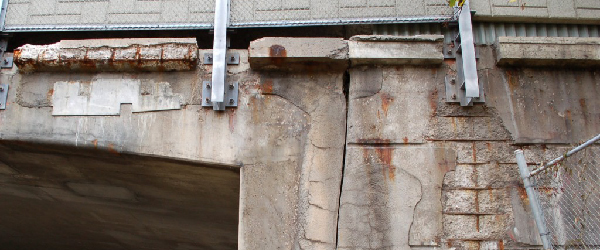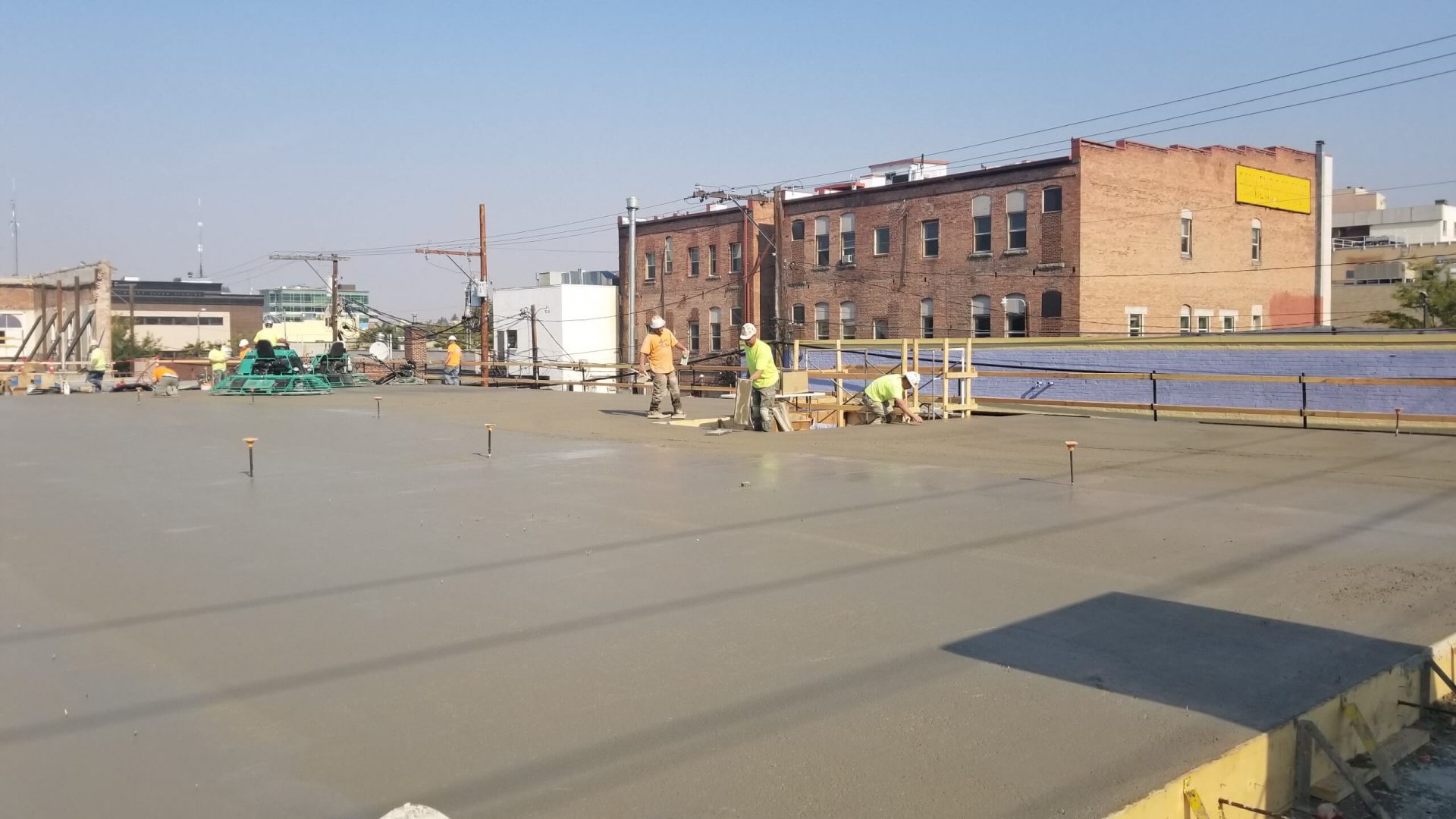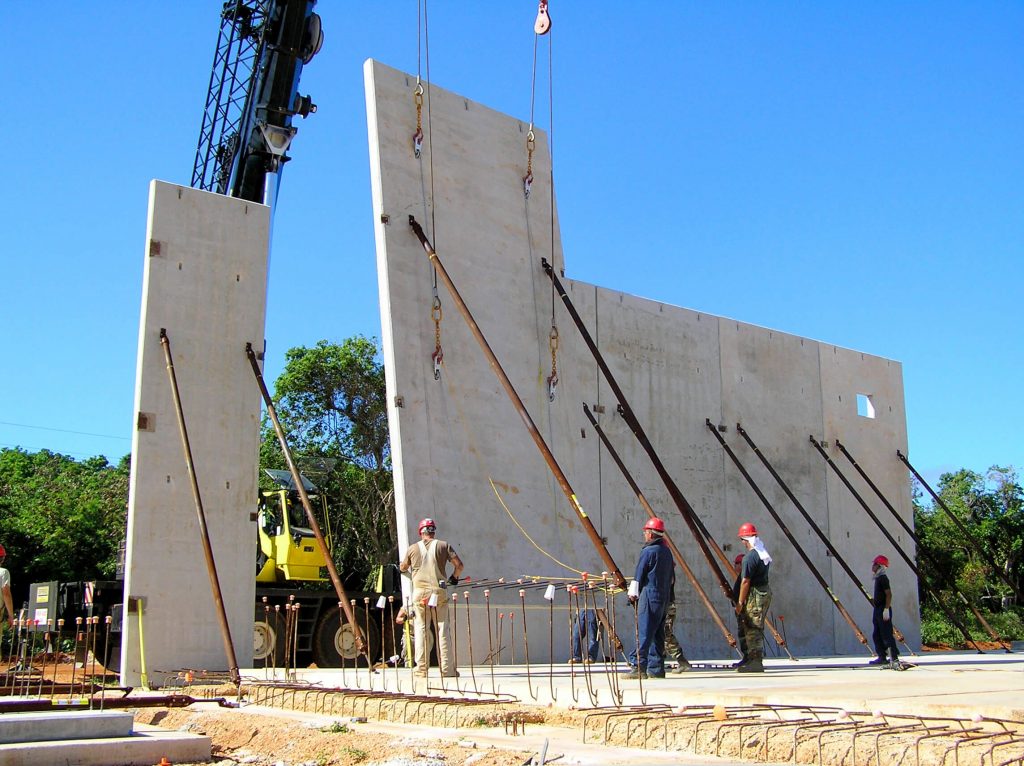As we head over the 21st century, concrete professionals are facing the well-known issue of corrosion in concrete structures on a regular basis. Corrosion causes the gradual deterioration or degradation of affected concrete elements. The corrosion process initiates way before signs of degradation have shown on the exterior of the concrete element. Thus, it is important to be aware of this issue to assure the long-term quality of your project. In this blog, learn more about the relationship between chloride diffusion and concrete corrosion, as well as testing methods such as ASTM C1202, AASHTO T277, and RCPT.


Download the full Checklist now and experience smoother, stress-free cold-weather concreting like never before.
Chloride Diffusion
One of the main causes of corrosion in concrete is chloride diffusion. Chloride can penetrate concrete and reach reinforcement externally from exposure to de-icing salts or seawater. It can also be present internally in concrete ingredients. Steel reinforcement is protected naturally with a passivating layer of a PH level of 13 to 13.8. Once a certain amount of chloride reaches reinforcement, with the presence of moisture and CO2 from the air, the de-passivation of reinforcement initiates. This brings down the PH level of reinforcement to lower than 9 at which point corrosion initiates.
Simply put, to a certain extent, chloride diffusion will cause reinforcement corrosion with the presence of CO2 and moisture. Corrosion causes the cracking of concrete, which allows for more moisture, CO2, and Chloride to penetrate more areas of concrete, a self-spinning cycle with a problem that grows larger with time if not dealt with appropriately.
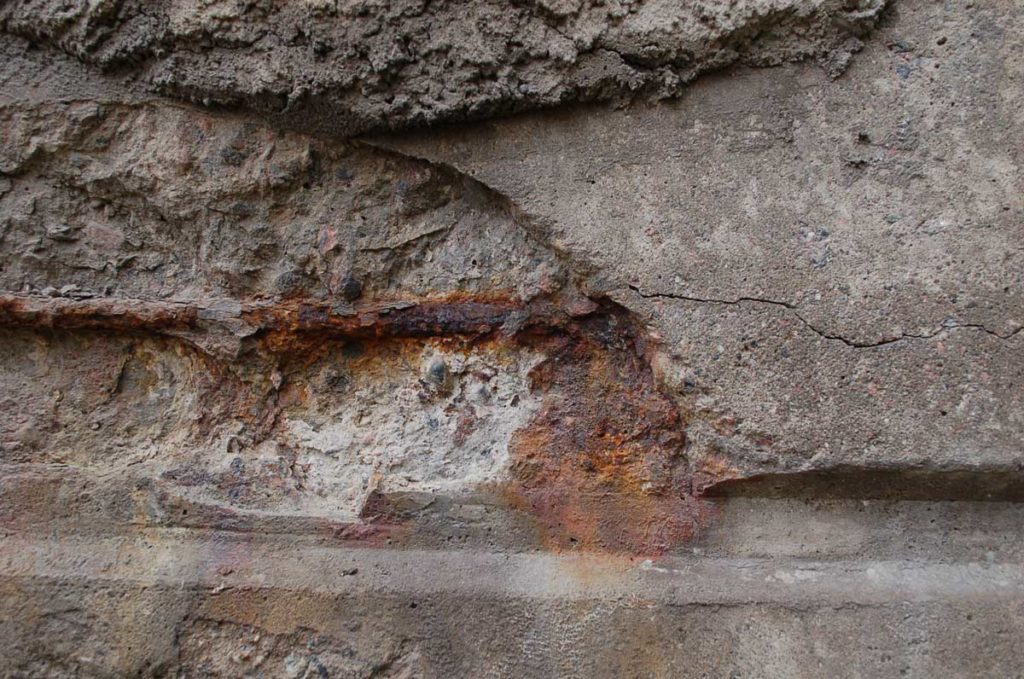
The Importance of Permeability
Concrete’s mix design and internal properties such as the pore structure and its connectivity (i.e., Permeability), affect the amount and speed of chloride transport through concrete. The higher the permeability of concrete, the more chloride can ingress and transport through concrete.
Nowadays, concrete structures are built with specifications calling for low permeability. However, old concrete structures need to be evaluated for their permeability to avoid catastrophic events. Overall, it is important to measure concrete’s chloride permeability when evaluating and comparing concrete mix designs for new construction projects, as well as for the susceptibility to chloride diffusion in existing concrete structures. In other words, it is a way to measure concrete’s resistance to chloride diffusion.
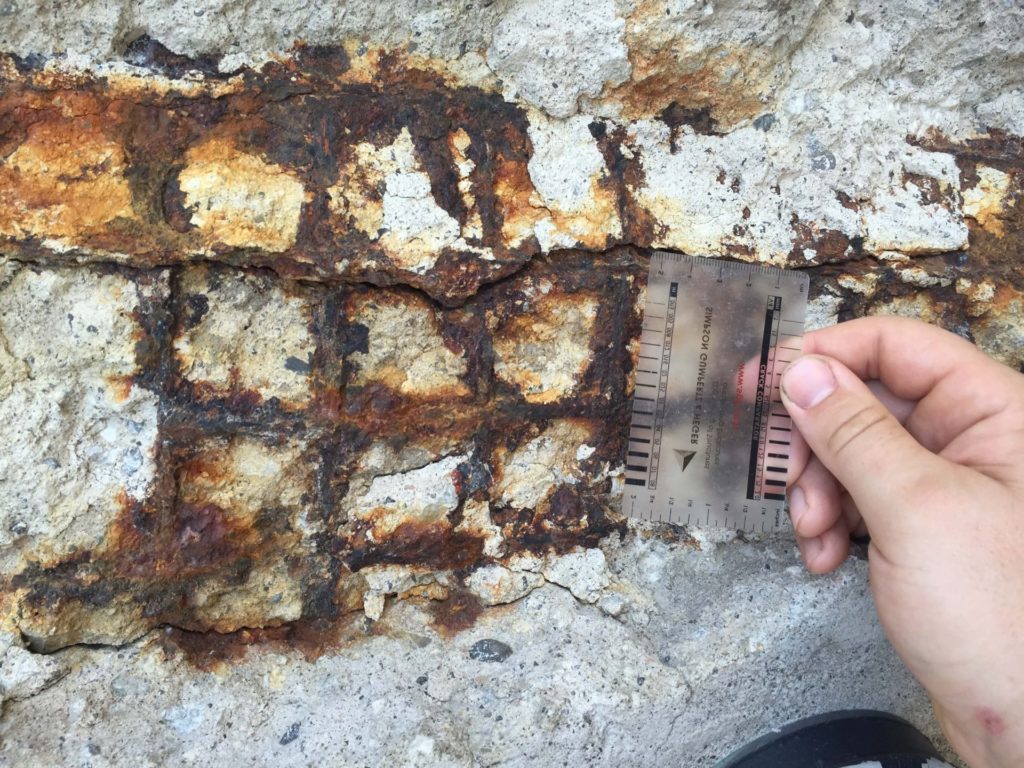
ASTM C1202, AASHTO T277, and RCPT
Since chloride migration in concrete is a slow process, researchers have investigated testing methods that accelerate and measure chloride migration in concrete. As a result, we know now that applying an electrical current to a concrete specimen accelerates the process of chloride migration in concrete.
Thus, ASTM C1202 “Standard Test Method for Electrical Indication of Concrete’s Ability to Resist Chloride Ion Penetration”, and AASHTO T277 “Standard Method of Test for Rapid Determination of the Chloride Permeability of Concrete” were developed, resulting in the Rapid Chloride Permeability Test (RCPT).
This testing method involves measuring the electrical current that passes through a 50 mm thick by 100 inches diameter sample obtained from a concrete core or cylinder sample, depending on the application, in six hours. The sample is placed in the testing device cells, and a 60 Voltage DC is maintained across the ends of the sample for the duration of the test. Readings are taken every 30-minutes, then the sample is removed at the end of the six hours from the cell while the number of coulombs passed through the specimen is calculated.
The correlations between the results of this test (charges passed) and the long-term chloride permeability of concrete established by ASTM C1202 are presented in Table 1.
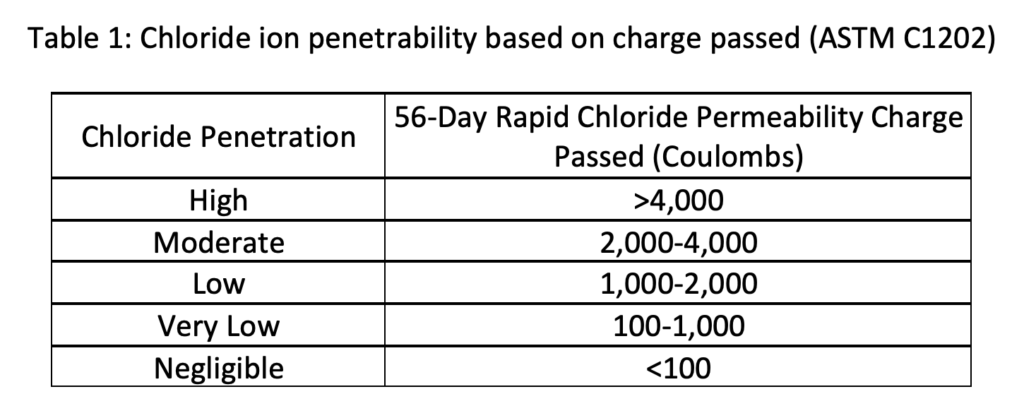
The ASTM C1760 is another testing method for a rapid indication (i.e., in one minute) of the concrete’s resistance to the penetration of chloride by diffusion. The results of this test method can also be related to the apparent chloride diffusion coefficient that is determined using the ASTM C1556 test method.
Giatec’s Perma2™ is a laboratory test device for the measurement of the resistance of concrete against the penetration of chloride (RCPT) according to ASTM C1202, AASHTO T277 and ASTM C1760 standards. The measurement data can be used to estimate the chloride diffusion coefficient of concrete for the service life prediction and durability-based design of concrete structures, as well as the durability-based quality control of the concrete.
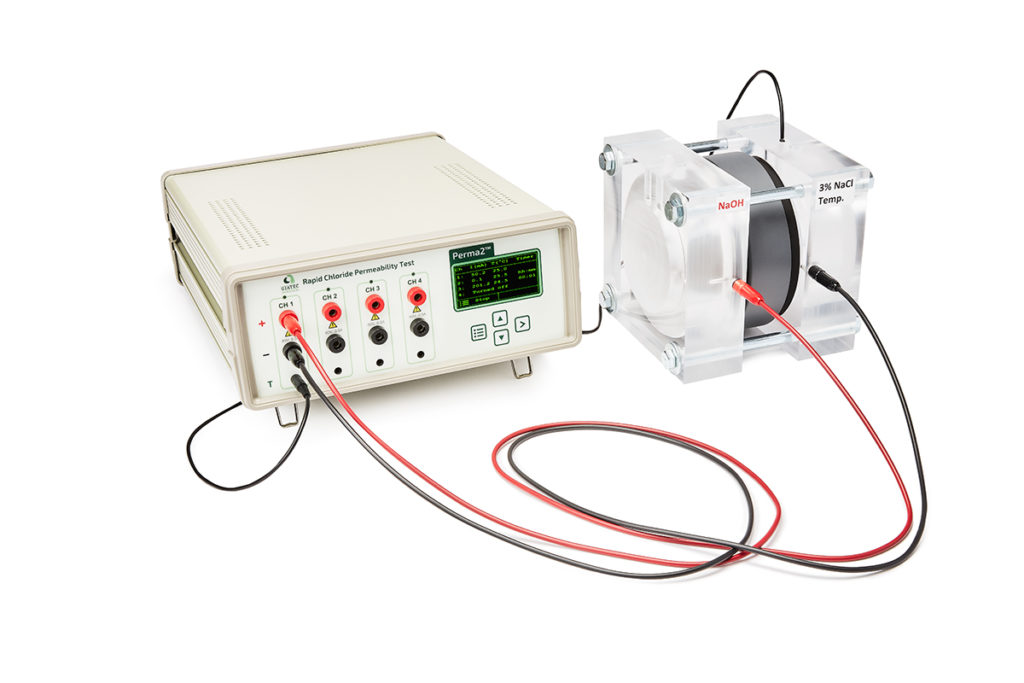
Application:
Perma2™ device can be used for testing the durability of concrete exposed to chloride-contaminated environments including
- Concrete’s ability to resist chloride ion penetration (ASTM C1202, AASHTO T277), bulk electrical conductivity of concrete (ASTM C1760), and performance-based quality control of concrete
- Estimation of the chloride diffusion and chloride migration coefficient of concrete
- Service life design and estimation of the remaining life of concrete structures
Features:
The followings are unique features of this device
- Stand-alone operation, easy-to-assemble, auto-sealable cells with rubber gasket and spacer (i.e., does not require caulking), accurate (±0.1 mA), verification kit, flexible logging interval time (1 to 10 min)
- Automatic temperature control system, four measurement channels, user-friendly PC software, customizable setup, and a USB connection to the computer
Learn more about Perma2™ and the rapid chloride permeability of concrete here

